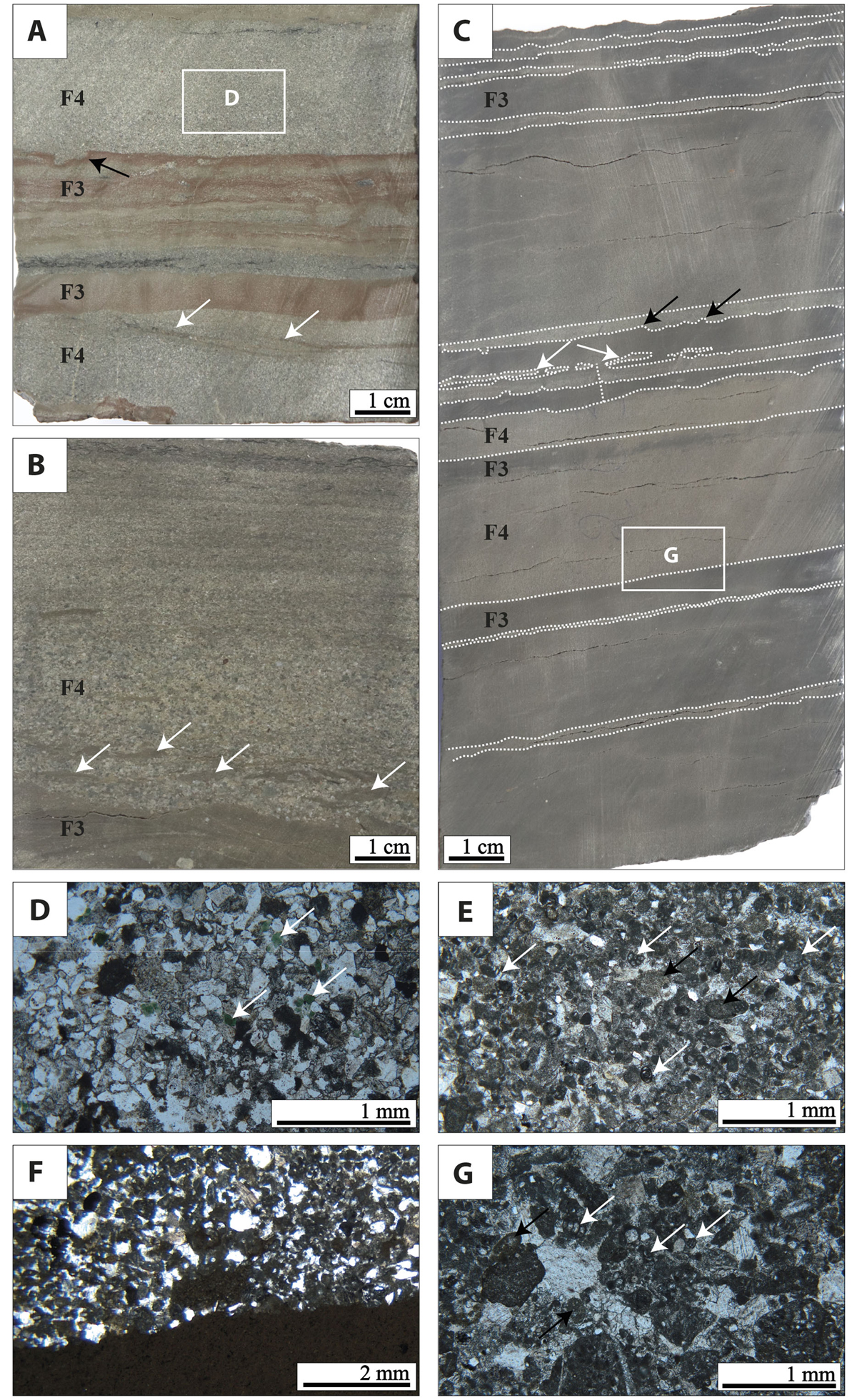Fig. 6

Download original image
Glauconite-rich sandstones and fine calcarenites (F4 facies). (A) Core photograph of glauconite-rich sandstone (F4 facies) alternating with marlstone/siltstone similar to those described previously (F3) in the form of planar parallel laminations similar to the upper parallel laminations of the Td member of the Bouma sequence (Bouma, 1962). The white arrows indicate current ripples within the sandstones similar to those from the Tc layer of the Bouma sequence, and the black arrows indicate a flute cast. As an indication, the direction of the current would be from the left to the right of the picture. Darker areas in the core sample indicate the accumulation of leaves. (B) Hand sample of fine to medium sandstone (F4 facies) displaying parallel lamination (lower parallel laminations of the Tb level of a Bouma sequence) with an erosive base and grain size cut-off with the underlying marlstone layer (F3 facies). The white arrows in F4 facies indicate rip-up clasts ripped from the F3 facies marls. (C) Core photograph displays alternation of the glauconite-rich sandstones (F4) and marls/siltstones (F3). Load structures are indicated by the arrows: white arrows indicate pendulous load cast while black arrows indicate flame structures. (D) Close-up view of the F4 sandstones from (A) showing the dominance of well sorted fine quartz and the abundance of glauconite mineral indicated by the white arrows (PPL microphotograph). (E) Thin section of the fine calcarenites (F4 facies) displaying the mixture of miscellaneous grains with the noticeable abundance of reworked Mesozoic foraminifera (white arrows) and the presence of lacustrine ooids/peloids (black arrows). (F) Thin section under PPL exhibiting a grain size cut-off between the calcarenite (F4 facies) and the underlying marlstone (F3 facies). (G) Thin section under PPL of a medium-sized calcarenite (F4 facies) displaying dominant carbonate extraclasts, some of which containing foraminifera (white arrows), the black arrow indicates a lacustrine ooid/peloid.
Current usage metrics show cumulative count of Article Views (full-text article views including HTML views, PDF and ePub downloads, according to the available data) and Abstracts Views on Vision4Press platform.
Data correspond to usage on the plateform after 2015. The current usage metrics is available 48-96 hours after online publication and is updated daily on week days.
Initial download of the metrics may take a while.




